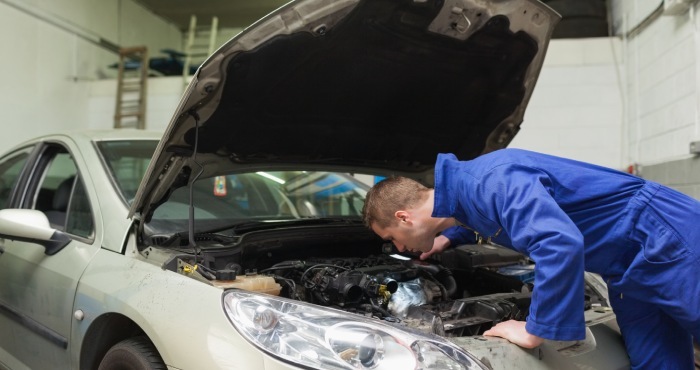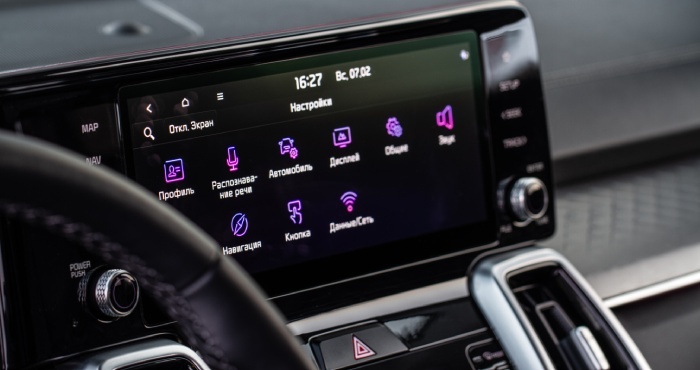Acquiring a new vehicle is meant to provide reassurance, yet there are times when underlying problems — such as an unexplained noise or inconsistent functionality — emerge only after you’ve brought it home. Such sporadic issues can be exasperating, particularly since they often don’t manifest during a technician-led test drive.
However, there’s no need to panic — you have rights on your side. By meticulously recording the issue, remaining diligent with your service appointments, and understanding when to take further action, you can strive for a solution. Should the issue continue, consumer protection laws like the California Lemon Law could provide legal recourse.
Understanding the Nature of Intermittent Car Problems
Some automotive problems are predictable and can be easily reproduced, whereas others are sporadic and only manifest under certain conditions, making it challenging for dealership technicians to diagnose. Here are several typical examples of issues that are intermittent or dependent on specific situations:
- The engine is prone to stalling after being idle for a long time.
- The transmission may hesitate or have difficulty shifting smoothly when going uphill.
- The infotainment system or touchscreen might experience glitches or become unresponsive after a cold start.
- Dashboard warning lights occasionally illuminate but disappear soon after, without any clear cause.
- Unusual noises can be heard, but only at particular speeds or when certain temperatures are reached.
These types of problems often do not present themselves during brief test drives at the dealership, which can lead service departments to conclude with “No Problem Found” (NPF). This can cause delays in repairs and frustration for vehicle owners.
Step 1: Start a Detailed Logbook
When a vehicle issue is intermittent, detailed documentation is crucial. Start by maintaining a logbook or digital record to capture every instance of the problem. Be sure to note essential information such as the date and time, weather and road conditions, actions you were taking (like braking, accelerating, or turning), and any dashboard alerts or warning lights.
Additionally, document any strange noises or behaviors from the vehicle during these occurrences. The more precise and consistent your records are, the greater the likelihood that a technician can spot trends and replicate the issue during their examination. This thorough approach can greatly enhance the effectiveness of addressing sporadic problems.
Step 2: Capture the Problem When It Happens
Whenever feasible, capture videos or photos on your smartphone when the problem arises. This could involve:
- A video demonstrating flickering lights
- A recording of unusual sounds while accelerating
- Footage of error messages on the dashboard
- An image of a non-responsive touchscreen or infotainment system
Having visual documentation significantly increases the likelihood that the service center will take your issue seriously and offers concrete proof that a malfunction exists, even if it doesn’t occur during their examination.
Step 3: Recreate the Conditions
Occasionally, an issue may arise only in particular situations. If you can pinpoint and recreate those scenarios — like driving on the highway for half an hour or starting a vehicle that has been idle overnight — suggest accompanying the technician on an extended test drive.
Share your observations, and if the problem can be consistently reproduced with some effort, request that the service team allocate additional time for a thorough diagnosis.
Step 4: Ask for a Service History Printout
Whenever you take your car in for maintenance, even if the technician is unable to replicate the issue, ensure that they document your complaint and provide you with a repair order. This will establish a record that demonstrates:
- You notified them of the problem while your warranty was still valid.
- The dealership had several chances to resolve the matter.
You can request a copy of each repair order or ask for a comprehensive service history report. This documentation will be essential if you decide to pursue a Lemon Law claim or escalate the situation to a manufacturer or legal representative.
Step 5: Escalate the Issue to a Manufacturer Representative
If your dealership continues to ignore or dismiss your concerns, it may be time to contact the vehicle manufacturer directly. Car manufacturers typically have regional customer service teams or representatives who can intervene when dealerships are unable to resolve persistent issues.
You can generally reach them by calling the customer support number found in your owner’s manual or by visiting the manufacturer’s official website. Alternatively, you could request that the service department at the dealership file a factory case on your behalf.
Once a case is initiated, the manufacturer might dispatch a factory-trained representative to assess your vehicle in person. They may also suggest new diagnostic procedures that the dealership hasn’t attempted, which could lead to a successful resolution of the problem with your vehicle.
Step 6: Consider an Independent Diagnostic Report
If you’re not receiving satisfactory responses from the dealership, think about hiring a certified independent mechanic or diagnostic expert for an inspection at your own expense. Their assessment might reveal problems that the dealership’s technicians overlooked or disregarded.
This report can serve several purposes:
- Strengthen your case with the manufacturer by offering comprehensive documentation and records of the problem.
- Supply well-organized evidence in the event of a dispute to bolster your position.
- Aid in constructing your Lemon Law claim, if relevant, by gathering all service documents, communication logs, and proof of multiple repair attempts.
Step 7: Know Your Rights Under State Lemon Laws
In California and several other states, Lemon Laws are designed to protect buyers of new vehicles from ongoing, unfixable problems. If your car spends excessive time in the repair shop or the dealership can’t fix a reported issue after a “reasonable” number of attempts, you may be eligible for a replacement or refund. A California Lemon Law attorney can help you determine your rights and guide you through the legal process to secure the compensation you deserve.
Here are the criteria for California Lemon Law eligibility:
- Your vehicle has a significant defect that affects its usability, safety, or overall value.
- The dealership has made between two to four attempts to fix the same problem.
- Your vehicle has been out of service for a total of 30 days, which does not have to be consecutive.
- The issue was reported while the warranty is still valid.
Even if the problem doesn’t manifest during a test drive, having records of repair attempts and documented symptoms can still support your claim.
Step 8: Consult a Lemon Law Attorney
If the manufacturer refuses to buy back or replace your vehicle and the dealership continues to deny the issue, it may be time to consult a San Diego Lemon Law attorney. Many San Diego Lemon Law lawyers offer free initial consultations and only charge fees if they successfully resolve your case.
A Lemon Law attorney can:
- Thoroughly assess your repair history and related documents to see if your vehicle meets the legal criteria.
- Negotiate with the manufacturer on your behalf to achieve a satisfactory outcome.
- Represent you in arbitration or court if needed, to uphold your legal rights.
- Assist you in obtaining a buyback, a replacement vehicle, or a cash settlement based on your specific situation.
Step 9: Arbitration and Manufacturer Dispute Programs
Certain manufacturers provide certified programs for dispute resolution, typically backed by state authorities, which employ arbitration panels to address vehicle problems more swiftly than conventional court processes. The purpose of these programs is to simplify the procedure and promote quicker resolutions for both consumers and manufacturers.
Before starting arbitration, gather all relevant documents including repair orders, photos or videos of the issue, independent inspection reports, and a clear written summary of your complaint. While arbitration doesn’t guarantee a favorable outcome, strong documentation can significantly improve your chances and may prompt the manufacturer to offer a better resolution.
California Lemon Law arbitration offers consumers a faster, cost-effective alternative to court by resolving vehicle defect disputes through manufacturer-sponsored or state-certified dispute resolution programs.
Step 10: Stay Calm, Persistent, and Proactive
Experiencing vehicle issues that can’t be demonstrated on command can be quite frustrating. However, it’s important to keep in mind that just because a problem cannot be duplicated during a test drive doesn’t imply that it isn’t genuine. Your responsibility is to remain proactive, composed, and thorough in recording the details of the issue.
If needed, don’t hesitate to push the matter up the chain until it reaches an individual with the power to implement effective solutions. Automotive companies have a stake in maintaining their reputation and are bound by legal requirements at both state and federal levels — often, they are more inclined to address a valid concern when presented with solid evidence and determined persistence.
To effectively resolve your vehicle issue, it’s crucial to keep detailed records, collect photographic evidence, communicate with the manufacturer’s representatives, and consult legal counsel when necessary. This proactive approach strengthens your position and helps enforce your rights. California Lemon Law lawyers are well-versed in consumer protection laws and can assist you in pursuing the compensation or resolution you deserve. Remember, you’re entitled to a safe and reliable vehicle—and the law is on your side to ensure that.







